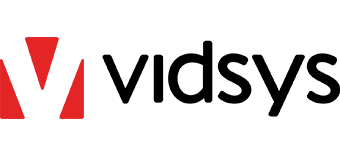
In 2008, the security industry buzzword was ?convergence.? It was a statement on how the market was shifting from analog video surveillance cameras to digital IP surveillance cameras. The experts were saying how the convergence would top 51% percent digital IP by 2009. It took until 2015.
If we look at another part of the market, we see the earliest conversations about Physical Security Information Management (PSIM) around 2010.
According to Wikipedia, Physical Security Information Management (PSIM) is a category of software that provides a platform and applications created by middleware developers, designed to integrate multiple unconnected security applications and devices and control them through one comprehensive user interface.
Notice the foundation of ?security systems? being at the heart of PSIM. Now if we bring in other organizational management systems into the mix, we evolve to the next level of overarching management systems.

Let?s look at PSIM again and see how the convergence of CSIM really is the evolution of PSIM.
PSIM collects and correlates events from existing disparate security devices (video, access control, sensors, analytics, networks, etc.) to enable security personnel to identify and proactively resolve situations. PSIM integration enables numerous organizational benefits, including increased control, improved situation awareness and management reporting.
By extending out the devices that a solution can communicate with, we get additional information and input of a much larger eco-system, other than just the security side of an organization?s environment. Bringing in building management information, other IT sensors, cybersecurity notifications, Internet-of-Things (IoT) inputs, as well as physical security data, you now end up with a more ?converged security AND information management? (CSIM) solution.
With the advent of computer systems having the power and bandwidth to deal with so much ?big data?, an organization can process and correlate these inputs into a ?big picture? system providing much more actionable knowledge to make smart business decisions.
Whether it?s smart cities, or smart campuses, or smart buildings, it is the amalgamation of all the information that can be obtained, categorized, and presented in such a way as to make clear and decisive ?smart? business decisions.
Information management solutions such as Vidsys Enterprise 2017 provides the synthesis of an organization?s multitude of ?data inputs? that significantly improves a customer?s ability to manage and respond to security or other significant events by creating an intuitive, easy to use, software integration platform.
The CSIM solutions provide a common platform connecting different systems. CSIM collects information from multiple disparate subsystems and then displays that ?knowledge? on a single user interface. Based upon predefined user criteria the software correlates events using automated workflow processes providing appropriate and timely responses.
As ?Command and Control? software gains in popularity and real-world utilization, the evolution of PSIM to CSIM seems logical. With the dissemination of IoT devices rapidly increasing, the number of ?sensors? that can be monitored, measured, and managed becomes viable, whereas organizations previously would have been inundated with so many systems leaving the humans overwhelmed.
It is now realistic for a company, a building, a campus, or a complete city to become a ?smart? organization with software solutions that are able to analyze disparate security devices or systems.
If your organization is needing to track all the information and steps of various company systems for compliance reporting or even in-depth investigative analysis, or you need an audit trail on how each operator interacts with the various systems, you will want to look at more current CSIM solutions.
In 2017, getting a better understanding of our security access control system, working together with the data from our building automation and control networks (BACnet), turn all these data-points into organizational knowledge. This is where we continue to grow with CSIM solutions.
Source: vidsys.com


